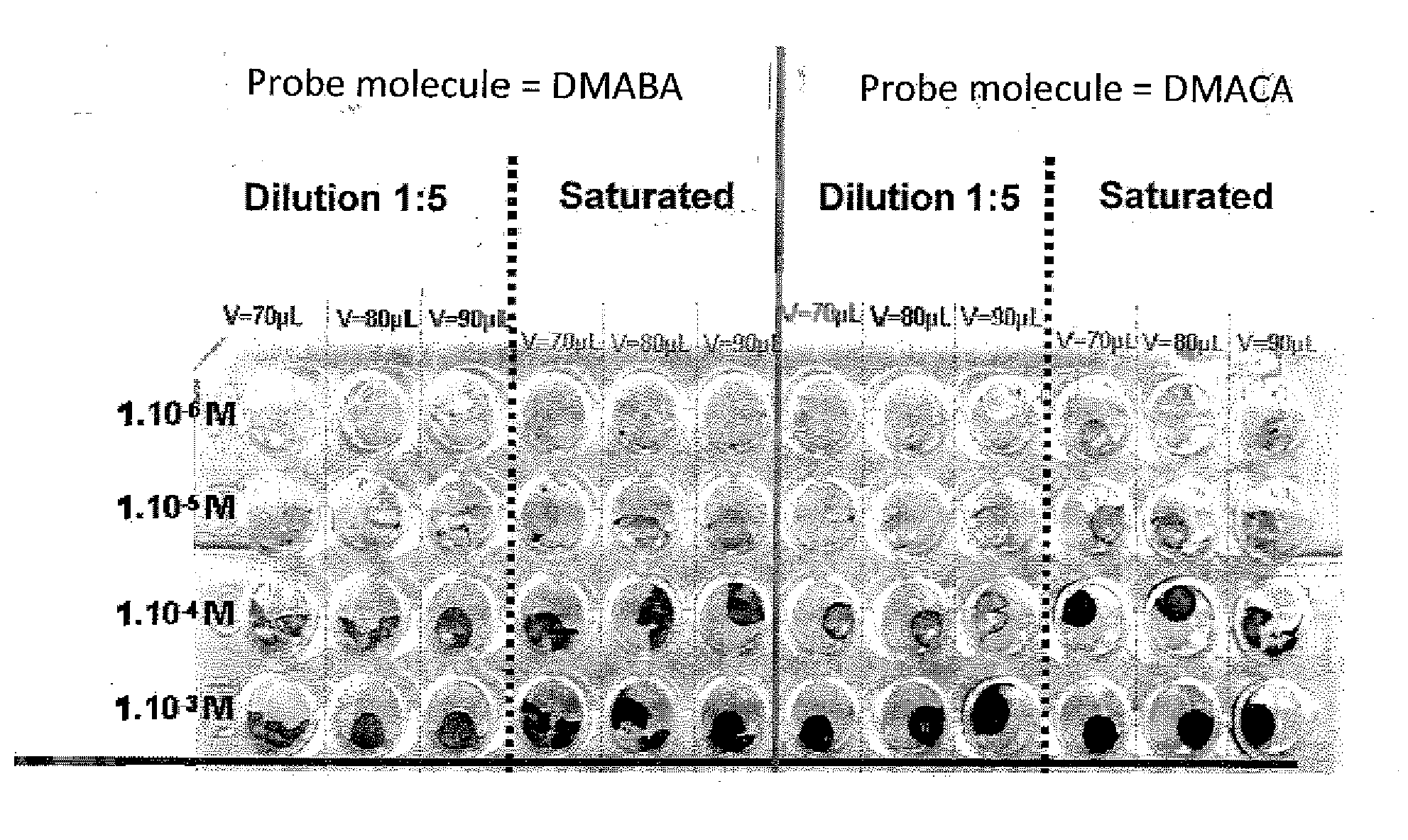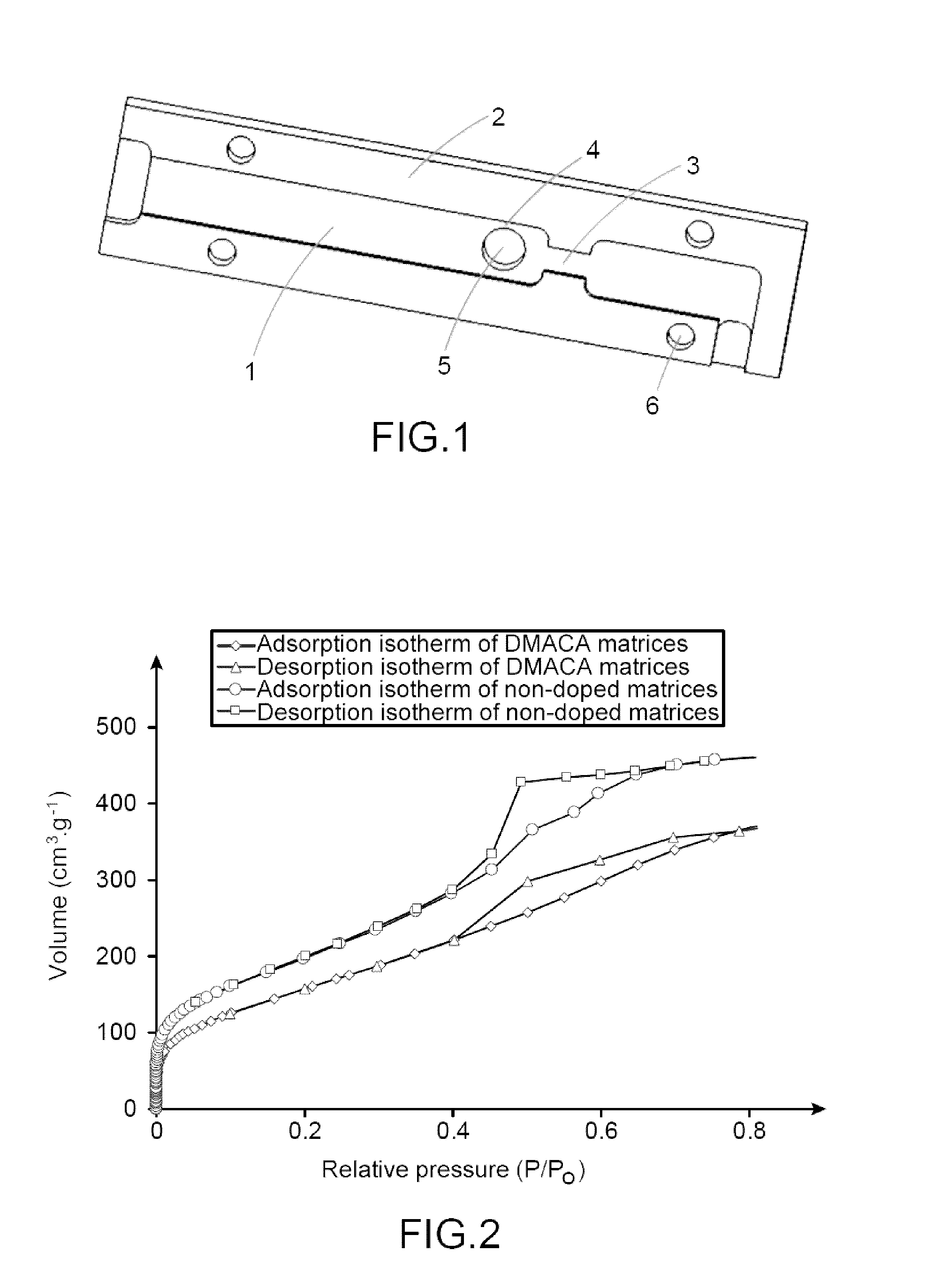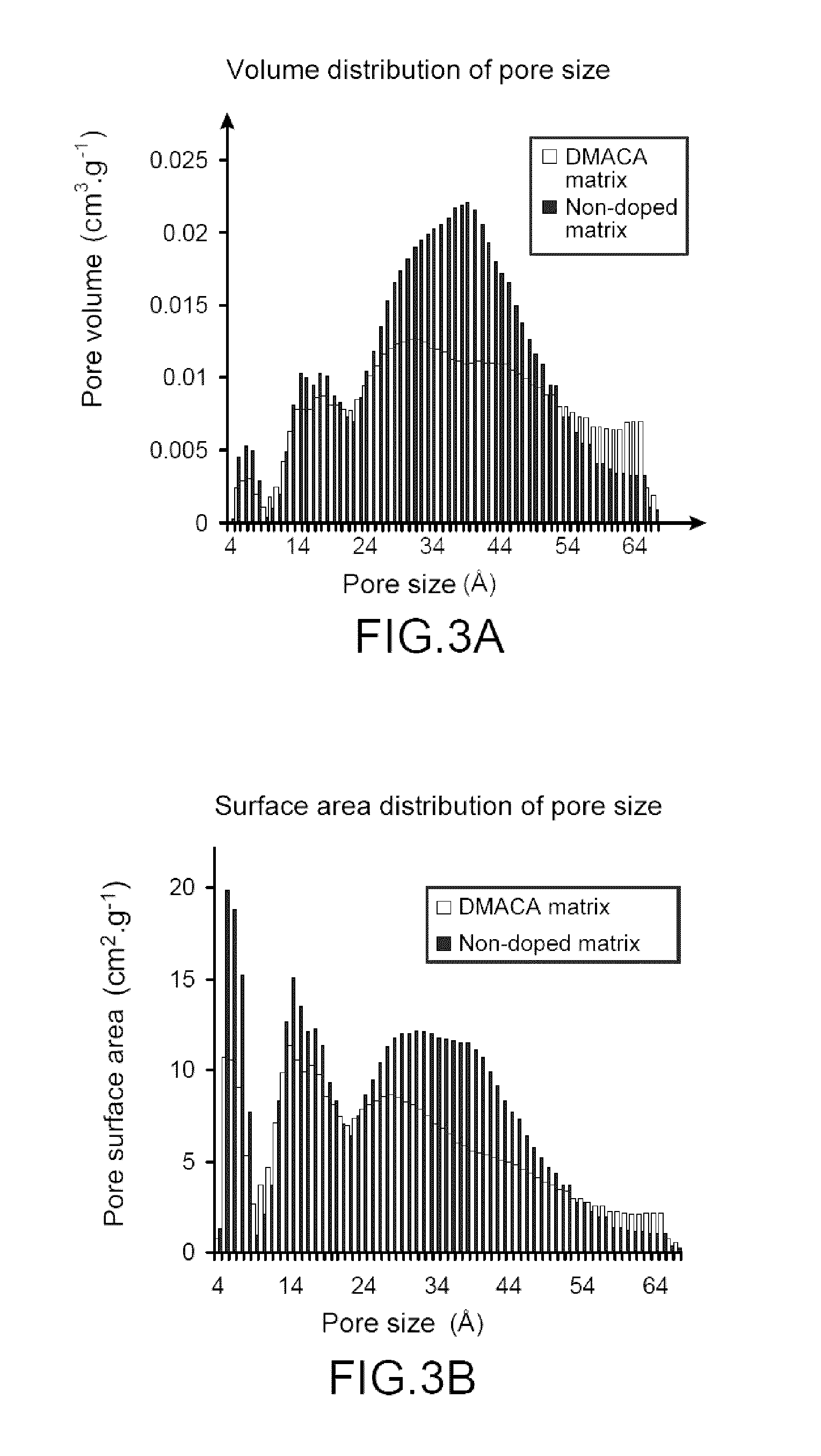Material and method for trapping, detecting and quantifying heterocyclic aromatic compounds and others
a heterocyclic aromatic compound and material technology, applied in the field of detection and optional quantification of compounds of interest, can solve the problems of inability to use colorimetric methods, and inability to purify samples in tim
- Summary
- Abstract
- Description
- Claims
- Application Information
AI Technical Summary
Benefits of technology
Problems solved by technology
Method used
Image
Examples
Embodiment Construction
I. Preparation of a Mesoporous Matrix According to the Present Invention
[0132]I.1. Material Used.
[0133]The different samples of mesoporous matrices were synthesised from two precursors, TMOS and APTES. The solvent and the acid used for this synthesis were methanol and 37% hydrochloric acid (12 mol·L−1) respectively. The described protocol uses DMACA as probe molecule.
[0134]More specifically, for preparation of 20 mL of sol doped > with DMACA and with an HCl concentration of 6 mol·L−1, the following are used:[0135]TMOS (Fluka, ref. 09324): 3.4 mL;[0136]methanol (Fluka, ref. 87680)+DMACA (Sigma-Aldrich, ref. 156477): 4.7 mL+70 mg;[0137]APTES (Aldrich, ref. 440140): 0.2 mL;[0138]ultrapure water: 1.7 mL[0139]hydrochloric acid 12 mol·L−1: 10 mL.
[0140]I.2. Preparation of the Sol.
[0141]The first step of synthesis consists in using a magnetic agitator to mix TMOS and methanol containing the dissolved DMACA for 2 min in a Pyrex beaker placed in a bath at −15° C.±5° C. (ethanol / carbonic ice m...
PUM
| Property | Measurement | Unit |
|---|---|---|
| volume % | aaaaa | aaaaa |
| time | aaaaa | aaaaa |
| size | aaaaa | aaaaa |
Abstract
Description
Claims
Application Information
 Login to View More
Login to View More - R&D
- Intellectual Property
- Life Sciences
- Materials
- Tech Scout
- Unparalleled Data Quality
- Higher Quality Content
- 60% Fewer Hallucinations
Browse by: Latest US Patents, China's latest patents, Technical Efficacy Thesaurus, Application Domain, Technology Topic, Popular Technical Reports.
© 2025 PatSnap. All rights reserved.Legal|Privacy policy|Modern Slavery Act Transparency Statement|Sitemap|About US| Contact US: help@patsnap.com



